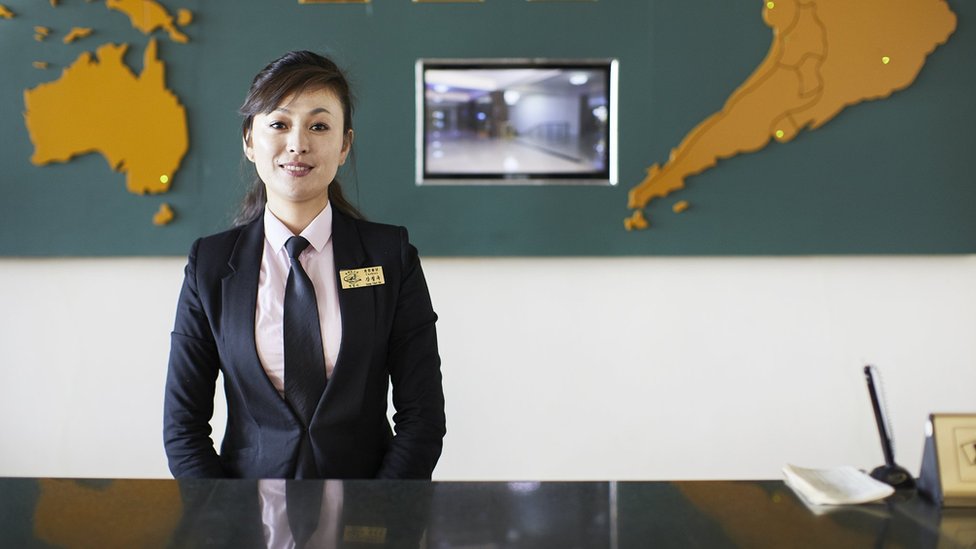
Tourist trips to North Korea are usually carefully choreographed by officials.
The country's tourism industry is controlled by the state, and travellers are monitored by government minders. They are only allowed access to "approved" sites, which means they all follow the same itinerary.
But last spring, author James Scullin and photographer Nicole Reed from Australia spent five nights in the capital Pyongyang, visiting 11 international hotels. They have now published a book called Hotels of Pyongyang.
Mr Scullin, who is a tour guide, has been to Pyongyang a total of eight times and told the BBC that hotels tend to be more neutral spaces, where visitors are not regulated in the same way.
Their architecture and interior design offer up interesting insights into a country which is largely closed off from the world, but still entertains tourists.
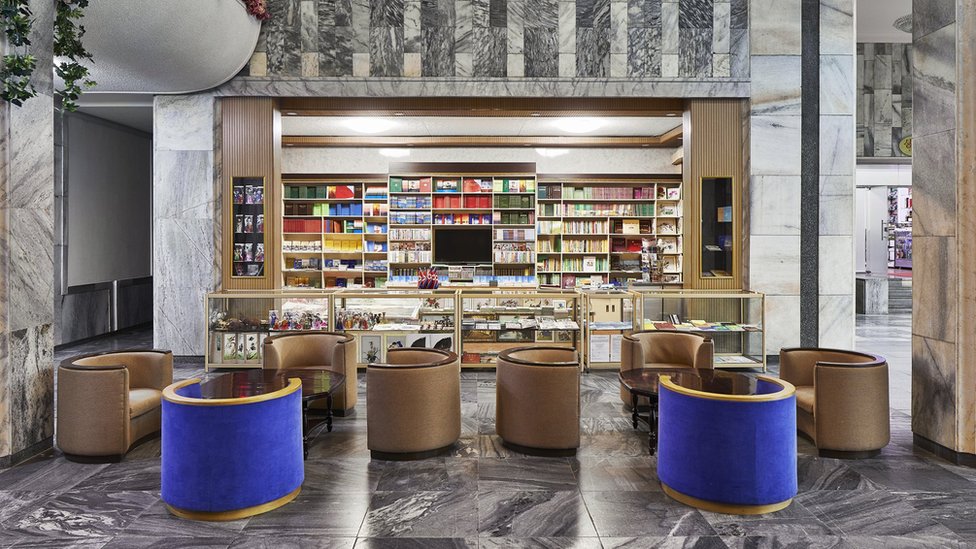
North Korean hotels are all government-run, so they have very little branding or advertising.
"It's really bizarre, because we are so used to that. It's just part of our lives," Mr Scullin says.
"It makes me wonder what our country was like before globalisation."
In fact, he calls the hotels "well maintained relics of old times".
Many of them were constructed during the 1970s and 1980s by East Germany and the Soviet Union after the Korean War left much of the city destroyed.
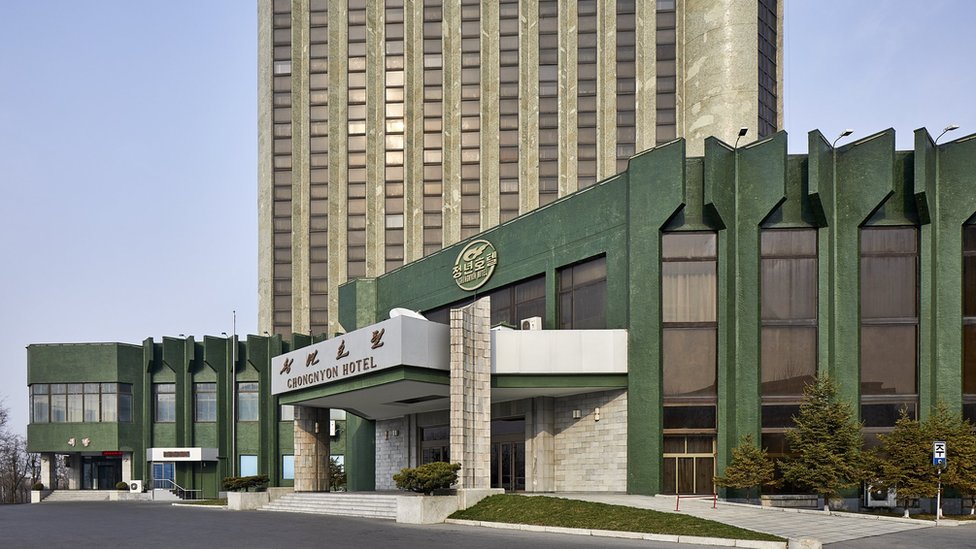
These influences are evident in the architecture and design of the hotels even today, says Mr Scullin.
Who visits them?
Given that North Korea is relatively cut off from much of the world, many would expect its hotels to be empty and deserted.
Yet when Mr Scullin and Ms Reed visited the city last year, they found that this was not the case. The hotels were full of tourists, though almost entirely from China.
"Our photos do give this impression that the hotels are deserted, but that's not true. The hotels were full. When you are a tourist in North Korea, you wake up in the morning at 08:00 and you are on the bus going to museums and monuments," Mr Scullin says.
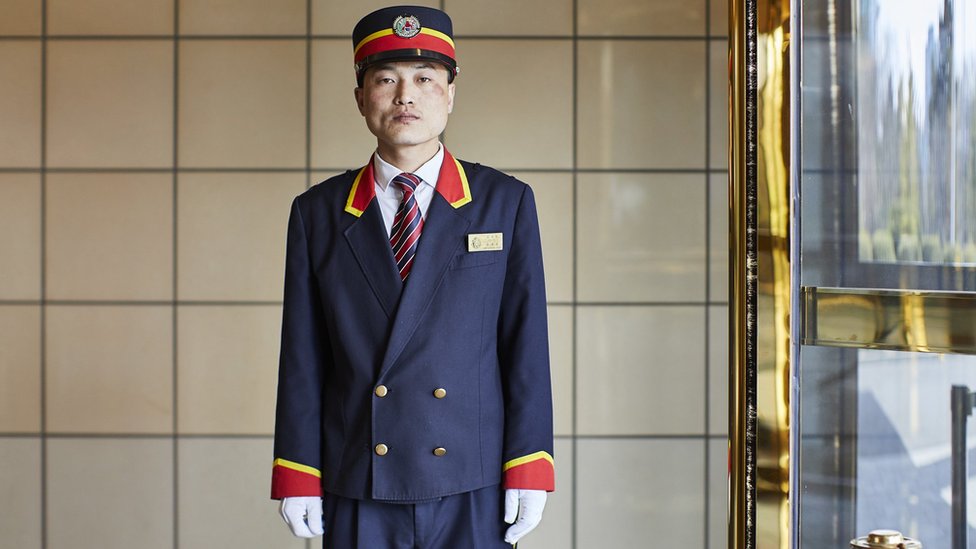
"You can't sleep in or stay at the hotel because you are on a guided tour. Our project was great because we had personal guides and just drove from hotel to hotel."
Tourism in North Korea appeared to be booming before the Covid-19 outbreak, he recalls. Around 100,000 tourists - mostly Chinese - are thought to visit North Korea each year. The number of non-Chinese tourists for the same period is assumed to be between 8,000 and 10,000.
Mr Scullin found that all the Chinese tourists he met came to North Korea for the same reason - it reminded them of China in the 1970s.
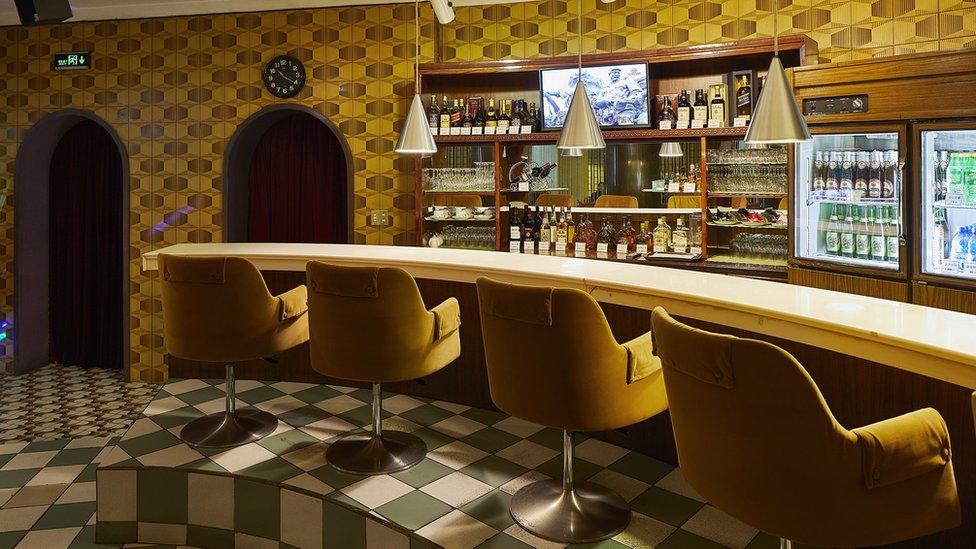
"By visiting North Korea, they're essentially visiting their own history. A lot of people from East Germany, Russia, and former Eastern countries visit for similar reasons. Western people like us visit because it is so unique and different."
What are they like?
The hotels have bars, swimming pools, and spas, although Wi-Fi and room service are not provided. In fact, the tourism infrastructure is decades old and not what most international tourists would expect.
But although the external buildings look rigid and uniform, the interior designs can be colourful and at times whimsical.
One example is the Koryo hotel, which features a karaoke room that looks like it is "out of the 70s," Mr Scullin says.
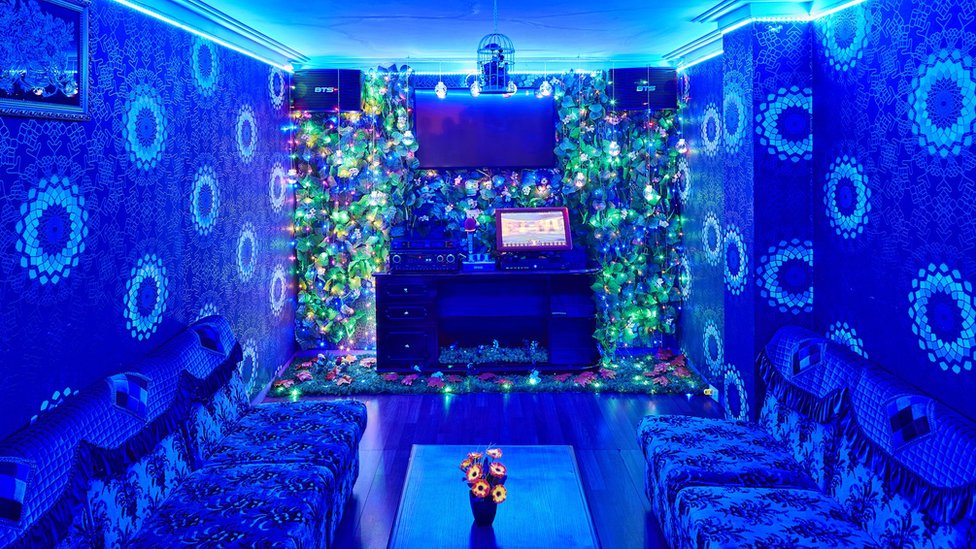
"It's interesting because it's so contrary to the country," he explains. "And it's so interesting to imagine who might have designed this. Because this person probably never went to the West or Japan, which means this strange-looking room came entirely out of their imagination."
"So, I think that's real individualistic expression of creativity that is possible even in North Korea, which is not the most conducive country for creativity."
"time" - Google News
November 06, 2020 at 07:17AM
https://ift.tt/3l7Ed7O
North Korea: Going back in time with Pyongyang's austere hotels - BBC News
"time" - Google News
https://ift.tt/3f5iuuC

No comments:
Post a Comment